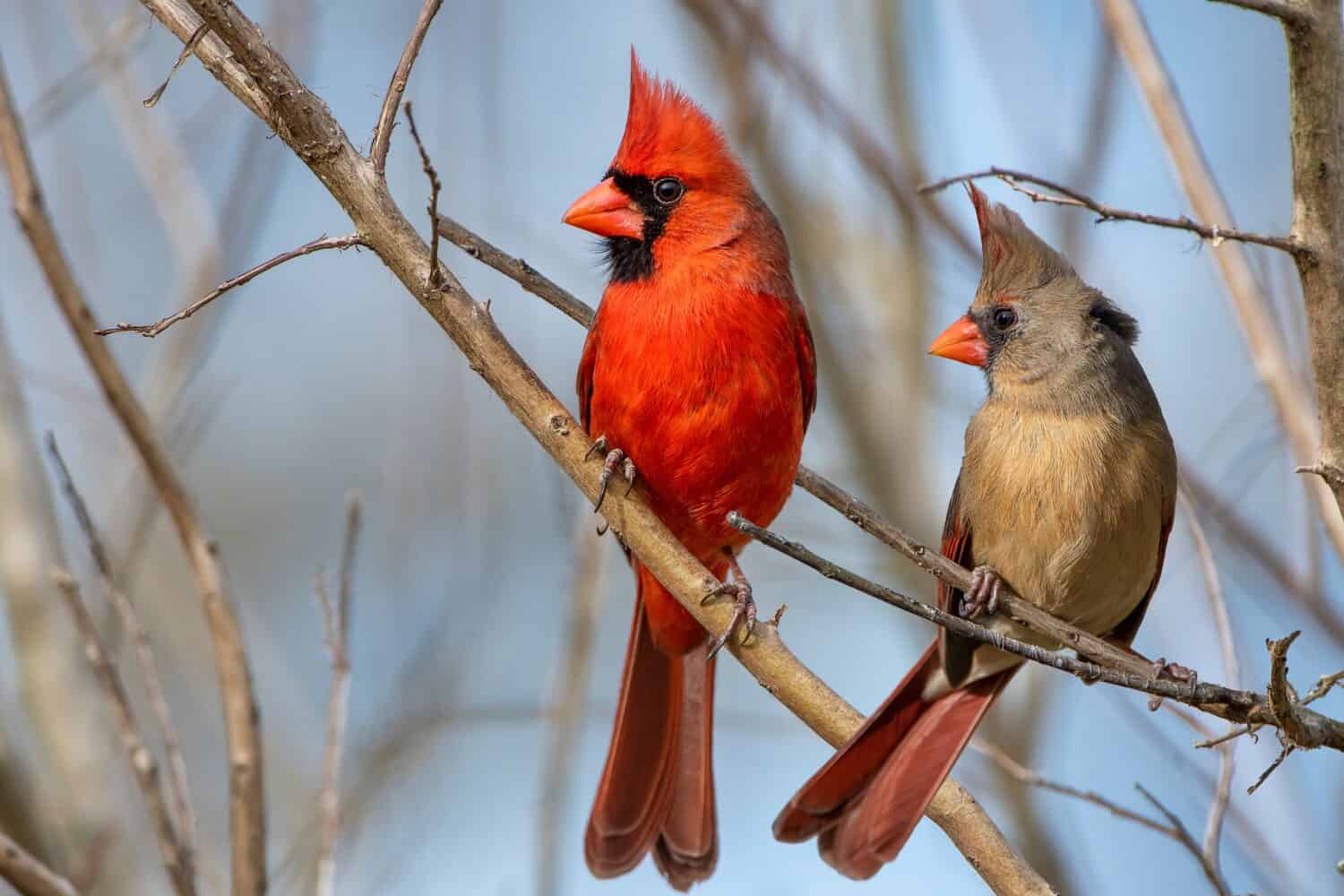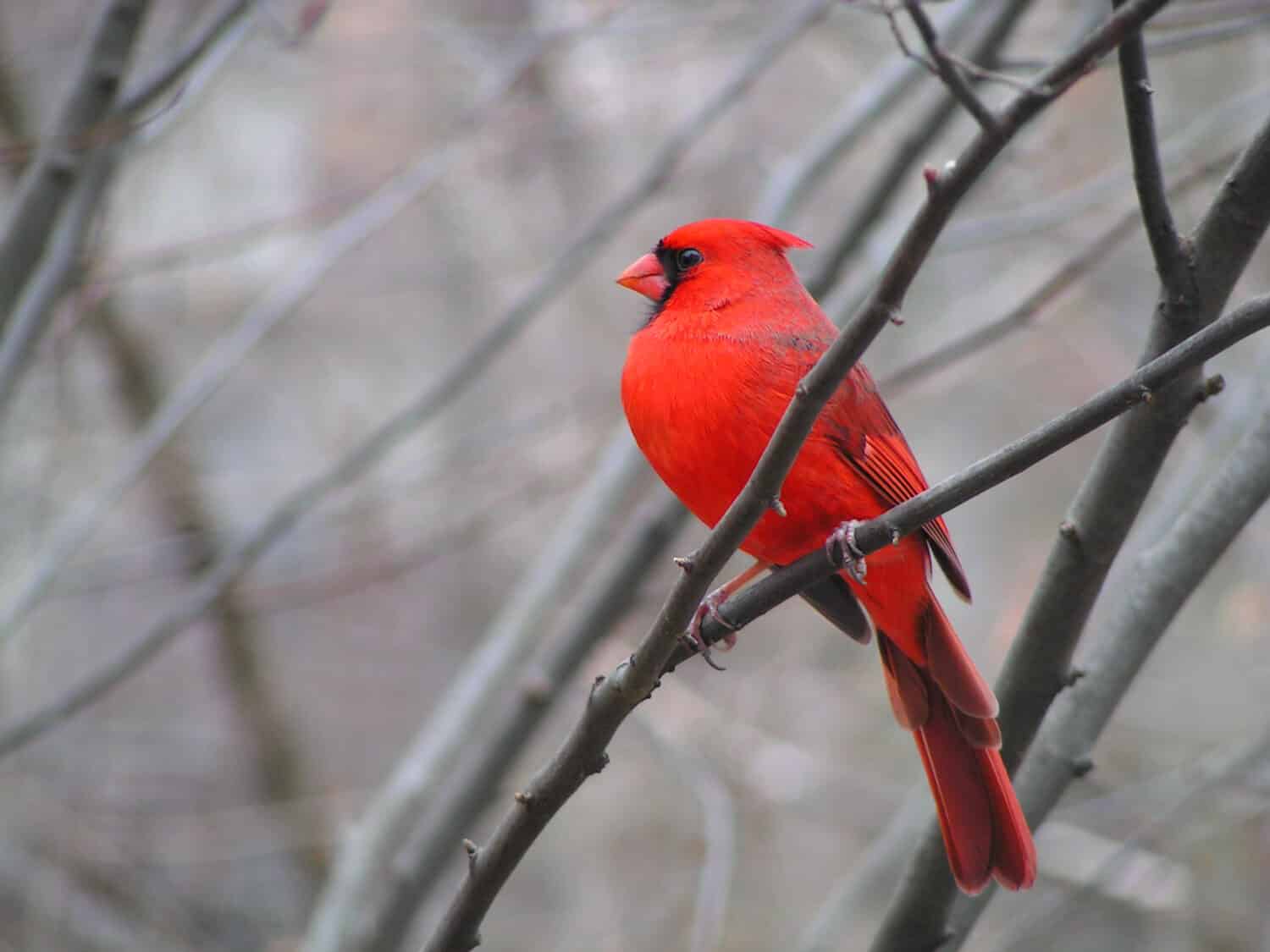Common cardinal, northern cardinal, Cardinalis cardinalis, or simply just cardinal — no matter how you refer to this famous, red-colored bird, you’ve definitely seen them and about in the world. The cardinal is easy to spot and is often found east of the Mississippi. This is one of the reasons why the state of West Virginia originally chose it as a state symbol. The official West Virginia State bird is the northern cardinal.

West Virginia’s State Bird
On March 7, 1949, legislation passed that allowed the naming of a state bird. On the same day, the house authorized students from public schools and those from civic organizations to name the bird. After many suggestions, the decision was made: the cardinal would be the West Virginia state bird.
The northern cardinal is actually the state bird for seven states: Indiana, Ohio, Illinois, Kentucky, North Carolina, and West Virginia. The cardinal is the top choice for a state bird in America. This is especially true for states found east of the Mississippi.
West Virginia citizens voted for the bird primarily because of its coloring. The beautiful red and black marking makes the cardinal one of the most easily identifiable birds. While the male cardinal has more vibrant coloring, both male and female cardinals have pointed reddish tufts and red beaks.
Additionally, cardinals do not migrate and stay year-round in the Appalachian Mountain region. Like many West Virginians, cardinals are not put off by the cold and snowy winter months.
What Do Cardinals Look Like?
As mentioned above, there is some differentiation between male and female cardinals. For males, they have vivid cerise feathers. In contrast, females have bronze or goldish feathers. The camouflage of the female makes it easier for her to blend in with the nesting materials. Females are slightly smaller than their male counterparts. However, both males and females are medium-sized birds. Cardinals typically weigh between 1.5 to 1.7 ounces and grow to be about 9 inches tall. The wingspan of a cardinal is about 10 to 12 inches wide.

Male and female cardinals have different colors.
©Bonnie Taylor Barry/Shutterstock.com
The Cardinals Preferred Climate
Cardinals do not migrate. Instead, they easily adapt to their climate and take up permanent residence. Whether they’re in deciduous forests or bustling cityscapes, cardinals are content to make their habitat in both warm and cold climates.
The cardinal is most popular in the eastern and Midwest regions of the United States. The birds also have habitats in Western Texas and Southern Arizona.
Some experts think the cardinal used to be primarily located in the Southern United States. There’s speculation that a warming climate might have pushed the cardinal northeast. A rising number of suburban areas across the northeast, along with more yard feeders during the winter months, might have lured cardinals to expand northward in the 1900s.
Some might say cardinals are homebodies. As non-migratory birds, they don’t move more than one mile from their parents or their birthplace.

The cardinal is non-migratory and often considered a “homebody.”
©Mary Terriberry/Shutterstock.com
What the Cardinal Eats
The cardinal’s trademark is its red plumage. The bird’s diet actually causes its colored feathers. Cardinals are typically granivorous, eating primarily grains and seeds, but the bird also enjoys insects. Cardinals eat a wide variety of fruits such as wild grapes, dogwood berries, and mulberries. The carotenoids found in these fruits provide the red and orange hues for the cardinal’s feathers.
While many cardinals are red, some can be yellow. Due to a genetic mutation, the yellow cardinal is missing the enzyme responsible for converting the yellow pigments in their food to red. This mutation affects very, very few cardinals—only about one in a million. If you see a yellow cardinal, count yourself special!
Are Cardinals Common?
Cardinals are quite common in the areas where they live. Since cardinals are non-migratory, they are in abundance in the East, Midwest, and Southwest. Cardinals show up in backyards, parks, forests, swaps, and sometimes even deserts. These birds thrive in the suburbs, ever since they expanded northward in the 1900s.
Where to See Cardinals in West Virginia
The cardinal is common and often found in mundane places. If you want to do some birdwatching across the state of West Virginia, check out some of these beautiful places: Dolly Sods Wilderness, Blackwater Falls State Park, Cranberry Glades Botanical Area, and North Fork Valley Canopy Tours.
The cardinal is located all across the state of West Virginia. If you hope to see one, be on the lookout for a flurry of vibrant red.
The photo featured at the top of this post is © Rizwan Mian/Shutterstock.com
Thank you for reading! Have some feedback for us? Contact the AZ Animals editorial team.






